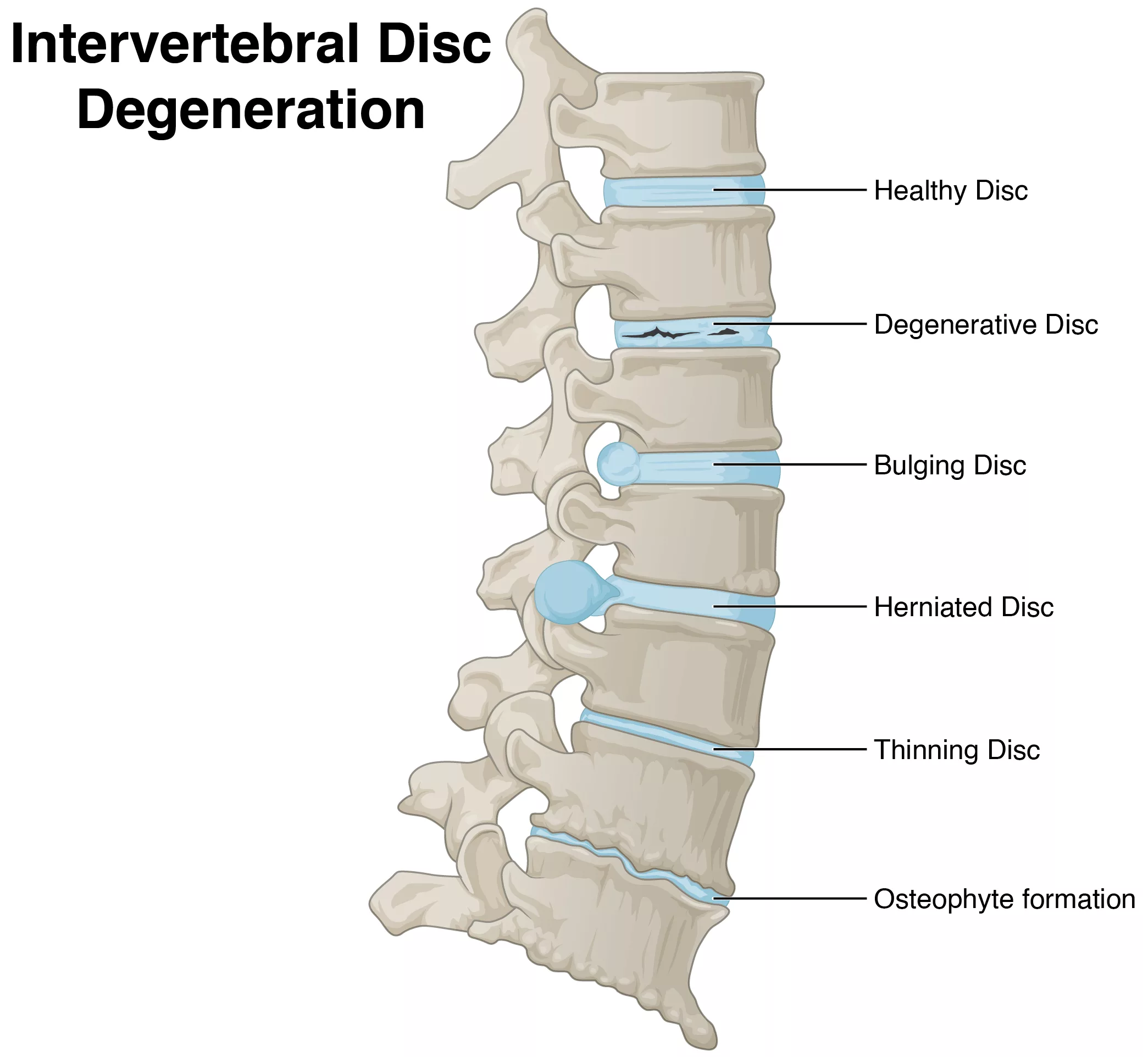
Degenerative Disk Disease (DDD) is a condition where the spinal disks, which act as shock absorbers and help in movement, begin to wear down. This degeneration is a normal part of aging, akin to getting gray hair. By age 65, about 20% of all U.S. adults exhibit some degree of degeneration, and this number rises to about 35% by age 80. Everyone will experience some level of degeneration over time, but the progression and symptoms can vary widely.
Request Appointment
What Is Degenerative Disk Disease?
Degenerative disk disease is when your spinal disks wear down. These disks are rubbery cushions situated between the vertebrae in your spinal column. They act as shock absorbers, aiding in movement, bending, and twisting comfortably. As these cushions wear away, the bones can start to rub together, leading to pain and other complications such as adult scoliosis, herniated disks, spinal stenosis, and spondylolisthesis.
Symptoms and Causes
The most common symptoms of DDD are neck pain and back pain. The pain:
- Can come and go, lasting for weeks or months at a time.
- May lead to numbness or tingling in your arms or legs.
- Radiates down your buttocks and lower back.
- Worsens with activities like sitting, bending, or lifting.
The primary cause of DDD is the natural aging process. Especially after age 40, most people experience some disk degeneration. However, not everyone experiences pain. Pain might occur if:
- Disks dry out: As you age, the soft core of the disks naturally loses water, making disks thinner and reducing their shock absorption capabilities.
- Disks tear or crack: Minor injuries can lead to small cracks in the disks. These tears, often near nerves, can be painful. If the outer wall of the disk cracks open, it may bulge out of place, leading to a herniated disk which may compress a spinal nerve.
Risk Factors for Degenerative Disk Disease
Some factors increase the risk of developing DDD:
- Acute injuries, such as falls.
- Obesity.
- Biological sex, with women being more likely to experience symptoms.
- Smoking.
- Working in physically demanding jobs.
Treatment Options for Degenerative Disk Disease
Usually, noninvasive treatment options are recommended first. These may include:
- Physical Therapy: Engaging in strengthening and stretching exercises with a trained healthcare provider.
- Medications: Taking nonsteroidal anti-inflammatory drugs (NSAIDs), muscle relaxers, or steroids.
- Steroid Injections: Injecting medicine near spinal nerves, disks, or joints to reduce inflammation and pain.
- Radiofrequency Neurotomy: Using electric currents to burn sensory nerves and prevent pain signals from reaching the brain.
For those with severe pain, surgery might be considered. Surgical options include diskectomy, foraminotomy, laminectomy, osteophyte removal, and spinal fusion.
Prevention for Degenerative Disk Disease
You can prevent or slow the progression of spinal degeneration through lifestyle changes such as:
- Achieving and maintaining a healthy body weight.
- Avoiding or quitting smoking.
- Regular exercise to increase strength and flexibility.
Outlook
Many people use nonsurgical and at-home treatments to manage pain long-term. If you have mild to moderate back pain, you will need to continue treatment to keep the pain at bay. Most people who undergo surgery for DDD experience long-term pain relief. Even after surgery, it's crucial to continue exercising and stretching to keep the back strong and healthy. Source: Cleveland Clinic
How Physical Therapy Can Help Degenerative Disk Disease
Physical therapists are movement experts who enhance the quality of life through hands-on care, patient education, and prescribed movement. Here's how they can assist with DDD:
- Stretching and Flexibility: Physical therapists teach specific exercises to improve movement in the spine, arms, and legs. This can be key to pain relief.
- Strengthening: Strong trunk muscles support the spinal joints, and strong arm and leg muscles help reduce the workload on these joints.
- Aerobic Exercise: Regular activities like walking or swimming have been shown to relieve pain, promote a healthy body weight, and improve overall strength and mobility.
- Manual Therapy: Physical therapists may use hands-on treatments to improve movement in stiff joints and tight muscles.
- Posture and Body Mechanics Education: They can show small changes in daily activities, like sitting, standing, bending, lifting, and even sleeping, to help manage the condition.
- The most Important way to physical therapy can help is by opening up the neuroforaminal hole that is compressing the nerve in your back. This hole is dynamic, even though its getting narrow as you age. So by opening the hole you will reduce the pain. Physical therapy can also improve the motion in the rest of your body so that when you move it is less likely that the hole will close down.
Schedule a consultation by calling (231) 944-6541 or send us an email through this form..
Request Appointment



